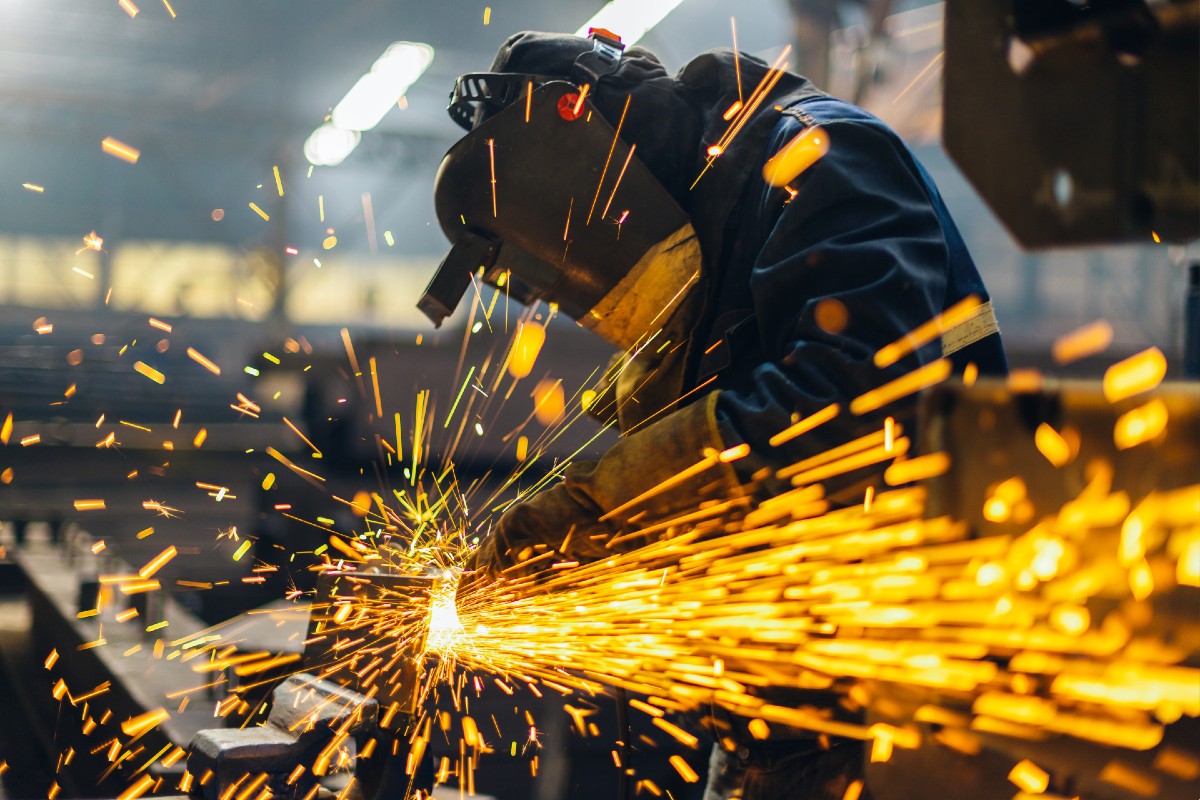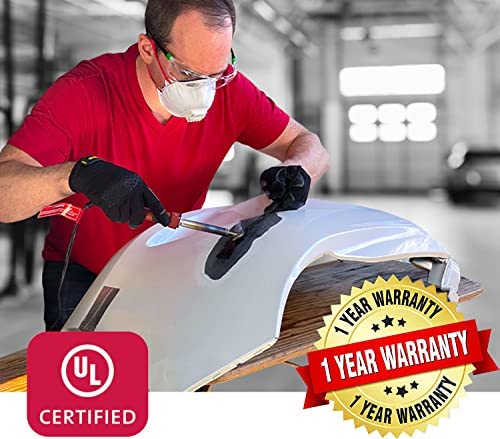Common Welding Repair Work Issues and Just How to Address Them Effectively
Welding repair services commonly encounter a variety of issues that can jeopardize the honesty of the end product. Typical troubles include insufficient infiltration, porosity, and imbalance, to name a few. Each problem offers one-of-a-kind difficulties that require details approaches for resolution. Comprehending these concerns is necessary for welders intending to boost their abilities and end results. This discussion will explore these common welding repair issues and reliable methods to address them.
Insufficient Penetration
Insufficient infiltration occurs when the weld steel falls short to totally fuse with the base product, leading to weak joints and potential architectural failures. This problem often comes from inadequate warm input, incorrect electrode angle, or incorrect welding speed. Welders may encounter poor penetration due to a miscalculation of the essential specifications for a details product thickness or kind. In addition, contamination on the base material's surface can impede effective bonding, aggravating the problem. To attend to insufficient penetration, welders ought to ensure ideal settings on their equipment and preserve a tidy job surface area. Regular inspection of welds is suggested to recognize any type of deficiencies early, enabling timely improvements and the prevention of jeopardized structural honesty in bonded settings up.
Porosity
Porosity is a common issue in welded joints that shows up as small gas bubbles trapped within the weld steel. This problem can jeopardize the stability of the weld, resulting in lowered toughness and potential failure under tension. Montana Mobile Welding and Repair Fabrication. Porosity typically occurs from contamination, wetness, or inappropriate welding methods, which allow gases to leave into the liquified weld swimming pool. To attend to porosity, welders should guarantee appropriate surface preparation, preserve a clean working setting, and make use of suitable welding criteria. Furthermore, picking the right filler material and shielding gas can reduce gas entrapment. Routine assessment and testing of welds can assist determine porosity early, assuring prompt corrective actions are taken, thus protecting the high quality and integrity of the welded structure
Misalignment
Misalignment in welding can occur from numerous elements, consisting of inappropriate setup and thermal expansion. Recognizing the root triggers is vital for efficient resolution. Numerous correction methods are readily available to realign parts and assure structural stability.
Sources of Misalignment
Welding misalignment typically stems from a range of underlying problems that can jeopardize structural honesty. One primary cause is incorrect fit-up of parts prior to welding, which can result in voids and unequal surface areas. Variations in thermal expansion throughout the welding process can additionally cause distortion, especially if the products being joined have different coefficients of expansion. Furthermore, poor fixturing and securing might stop working to hold parts firmly in location, leading to movement during welding. Improperly conserved devices, consisting of welding machines and devices, might introduce variances in the weld grain, more adding to misalignment. Ultimately, operator error, originating from not enough training or experience, can likewise play a considerable duty in developing misaligned welds.
Adjustment Methods Offered
Resolving imbalance successfully needs a combination of corrective techniques customized to the certain issues available. One usual approach is the usage of jigs or fixtures to hold components in the appropriate placement throughout welding, guaranteeing regular alignment. In addition, preheating the materials can aid reduce distortion and enhance fit-up. For considerable imbalance, mechanical adjustment strategies, such as making use of hydraulic jacks or clamps, can be used to correct the position prior to welding. Post-weld warmth treatment might additionally be necessary to alleviate tensions triggered by imbalance. Mindful evaluation and change throughout the configuration phase can stop imbalance concerns from ending up being significant problems, advertising a smoother welding process and boosting total architectural stability.
Distortion
Distortion is a typical difficulty in welding that can develop from various factors, consisting of irregular heating & cooling. Recognizing the sources of distortion is essential for carrying out reliable avoidance methods. Addressing this issue not just boosts structural honesty however likewise improves the total top quality of the weld.
Reasons for Distortion
When based on the extreme heat of welding, products commonly undertake adjustments that can bring about distortion. This sensation primarily emerges from thermal growth and tightening throughout the welding procedure. As the weld area heats up, the material broadens; upon cooling, it contracts, which can develop internal stress and anxieties. Furthermore, uneven home heating across a workpiece can intensify these anxieties, leading to bending or flexing. The kind of product also plays a considerable role; metals with varying thermal conductivity and coefficients of development might react in different ways, causing unpredictable distortions. Bad joint design and insufficient fixturing can add to imbalance throughout welding, enhancing the possibility of distortion. Comprehending these reasons is crucial for effective welding repair service and avoidance approaches.
Prevention Techniques
Efficient prevention methods for distortion throughout welding concentrate on regulating heat input and ensuring correct joint style. Preserving a constant warmth input aids to reduce thermal growth and tightening, which can lead to distortion. Utilizing techniques such as preheating the workpiece can additionally decrease the temperature slope, promoting consistent home heating. In addition, picking suitable joint designs, such as T-joints or lap joints, can improve security and decrease anxiety concentrations. Carrying out correct fixturing to secure the work surfaces in place additionally aids in keeping positioning during the welding process. Staggered welding series can distribute heat a lot more evenly, avoiding local distortion. By using these hop over to here strategies, welders can considerably reduce the possibility of distortion and improve the general top quality of their welds.
Breaking
Fracturing is a typical concern run into in welding fixings, usually arising from different factors such as inappropriate air conditioning prices, material choice, or insufficient joint preparation. The occurrence of splits can significantly compromise the integrity of the weld, leading to potential failures throughout procedure. To address this problem, welders need to initially analyze the source, making certain that products work and properly picked for the details application. In addition, managing the cooling price during the welding procedure is essential; quick cooling can generate anxiety and cause breaking. Correct joint layout and prep work also add to minimizing the danger. Carrying out these methods can enhance weld quality and sturdiness, ultimately lowering the possibility of cracking in completed weldments.

Incomplete Combination
A significant problem in welding fixings is insufficient blend, which happens when the weld metal does not effectively bond with the base material or previous weld passes - Montana Mobile Welding and Repair. This defect can lead to weak points in the joint, potentially compromising the stability of the bonded structure. Variables contributing to insufficient blend consist of inadequate warm input, improper welding technique, and contamination of the surfaces being joined. To resolve this issue effectively, welders ought to assure correct pre-weld cleansing and surface preparation, as well as readjust their welding specifications to accomplish adequate penetration and fusion. Normal assessment during the welding process can also assist recognize incomplete combination early, permitting timely rehabilitative steps to improve the overall top quality of the weld
Overheating
While welding repair services can improve architectural stability, overheating offers a considerable challenge that can bring about product deterioration. Too much heat throughout welding can modify the mechanical properties of metals, resulting in reduced toughness, enhanced brittleness, and bending. This phenomenon is particularly critical in high-stress applications where structural integrity is vital. Identifying overheating can involve visual inspections for staining or distortion, along with checking temperature level throughout the welding process. To alleviate the dangers connected with getting too hot, welders ought to utilize suitable strategies, such as managing heat input, readjusting travel speed, and using ideal filler products. In addition, carrying out pre- and post-weld warmth therapies can aid restore material homes and enhance the total top quality of the repair service, making certain long-lasting efficiency and security.
Often Asked Questions
What Are the Usual Signs of a Welding Defect?

How Can I Check My Welds for Top quality?
To evaluate welds for high quality, one can make use of aesthetic inspections, ultrasonic screening, and radiographic techniques. Each method ensures architectural stability, recognizes issues, and verifies adherence to defined criteria, ultimately improving the dependability of the bonded joints.
What Safety and security Precautions Should I Take While Welding?
When welding, one must focus on security by wearing appropriate personal safety devices, ensuring proper air flow, safeguarding combustible materials away, maintaining a tidy office, and being conscious of environments to protect against injuries and crashes.
Can I Fix a Weld Without Remodeling the Entire Joint?
Repairing a weld without redoing the whole joint is feasible, depending upon the damage (Belgrade Fabrication). Strategies such as grinding, including filler product, or utilizing a welding procedure can efficiently attend to certain defects while preserving the bordering structure
What Tools Are Important for Reliable Welding Services?
Vital tools for effective welding site link fixings include a welding machine, cord brush, grinder, safety gear, clamps, and filler materials. Each device plays an important function in making certain top quality and safety and security throughout the fixing procedure. Porosity normally occurs from contamination, moisture, or incorrect welding methods, which allow gases to escape into the molten weld swimming pool. Improperly kept tools, consisting of welding machines and devices, may introduce disparities in the weld bead, more adding to imbalance. When subjected to the intense warm of welding, materials commonly undergo changes that can lead to distortion. Fracturing is a common issue come across in welding repair services, often resulting from different variables such as inappropriate air conditioning rates, material choice, or poor joint preparation. A significant issue in welding fixings is insufficient combination, welding steel to aluminum which occurs when the weld metal does not sufficiently bond with the base product or previous weld passes.